 by "ttyymmnn" (ttyymmnn)
by "ttyymmnn" (ttyymmnn)
Published 09/15/2017 at 12:35
 by "ttyymmnn" (ttyymmnn)
by "ttyymmnn" (ttyymmnn)
Published 09/15/2017 at 12:35
Tags: planelopnik history
; Planelopnik
STARS: 10
Welcome to This Date in Aviation History , highlighting milestones, important historical events and people in aviation and spaceflight from September 13 through September 15.
!!! UNKNOWN CONTENT TYPE !!!

September 14, 1939 – The first flight of the Sikorsky VS-300. Mankind most likely began to dream of flight when they first saw the birds soaring effortlessly through the skies, and the earliest man-made aircraft sought to mimic the birds as best they could. However, starting first with gliders and then powered flight in 1903, flying was very much a horizontal process, and the only craft that could take off vertically were balloons. The next step, then, was clear: create a powered aircraft that could take off vertically, fly, then hover and land vertically in the same fashion. The practical implications of such an aircraft would be enormous. While the helicopter as we know it is a relatively modern invention, the idea for vertical flight goes all the way back to 400 BC, when Chinese children played with toys that had a wing on a stick that could be spun in their hands, toys that still exist to this day. The first known design for a vertical flying machine can be found in the works of the Renaissance artist and engineer Leonardo da Vinci , it’s unlikely that his aerial screw design would have been capable of flight. Though it’s possible that he created flying models, there was no provision for keeping the whole craft from spinning under the influence of the rotor. Helicopter designers continued to chase the dream of vertical flight, and it was actually achieved in aircraft such as the Focke-Achgelis Fa 223 , though it had two rotors on twin booms to counteract the torque from the spinning rotors and looked more like an airplane with propellers than a helicopter. Many others tried, but it was not until Russian emigre Igor Sikorsky developed his VS-300 that the dream of vertical flight with a single rotor became a practical reality, resulting in a helicopter that we would recognize today. Sikorsky understood that he needed some way to counteract the torque of the main rotor, and he went through numerous configurations before settling on the single, vertical tail rotor to control aircraft yaw, an arrangement that has become standard on most helicopters to this day.

But perhaps his greatest breakthrough came with his development of a cyclic control that tilted the spinning rotor disc to impart motion in a desired direction. Other controls directed the tail rotor and regulated engine speed, and the system of controls that Sikorsky developed has become the standard control system on most helicopters to this day. In order to test his design safely, Sikorsky took a series of tethered flights, flying the machine himself while wearing his trademark fedora, with the first liftoff taking place on September 14, 1939. Following refinements to the control system, the first untethered flight took place in May of the following year. Where other designers had used multiple engines to power the main rotor and tail rotor of their helicopters, the VS-300 used a single 75 horsepower engine to turn both, becoming the first in the US to use a single lifting rotor and a single engine. Sikorsky later developed the VS-300 into the R-4 , which was purchased by the US Army and became the world’s first mass produced helicopter. (Photo authors unknown)
!!! UNKNOWN CONTENT TYPE !!!
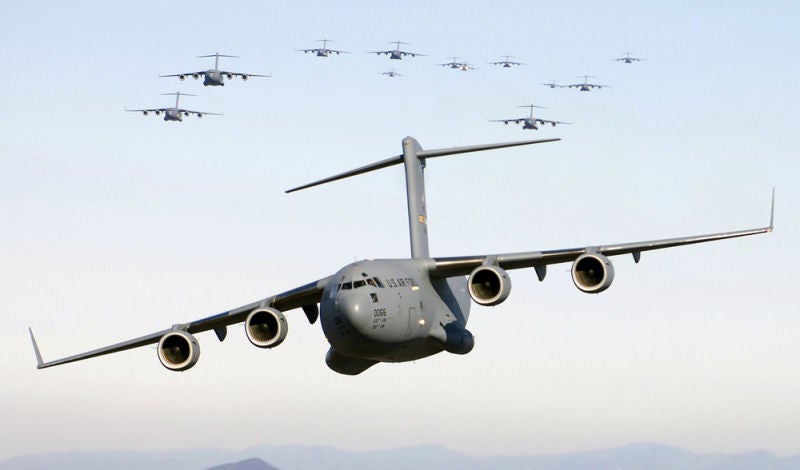
September 15, 1991 – The first flight of the Boeing C-17 Globemaster III. Napoleon Bonaparte (or perhaps Frederick the Great ) famously said, “An army marches on its stomach,” meaning that without food and supplies, an army goes nowhere. Practically the entire history of warfare has revolved around logistics—getting the army to the fight and supplies to the army—no matter how far from home that fight is. By WWII, the development of large strategic airlifters made that task significantly easier and, by the 1960s, the job was being done by large jet-powered aircraft like the Lockheed C-141 Starlifter and Lockheed C-5 Galaxy . But as the US Air Force looked at the logistics problems in the 1970s, particularly after their experiences in the Vietnam War, they realized that they needed a cargo jet that could haul more goods farther but also land on shorter, rougher runways. To deal with these new challenges, the Air force created a set of requirements as part of its Advanced Medium STOL Transport program (AMST) which evaluated two entries: the Boeing YC-14 and the McDonnell Douglas YC-15 . Both aircraft took design cues from the Lockheed C-130 Hercules , having a high, straight wing and a raised tail to allow cargo loading in the rear.
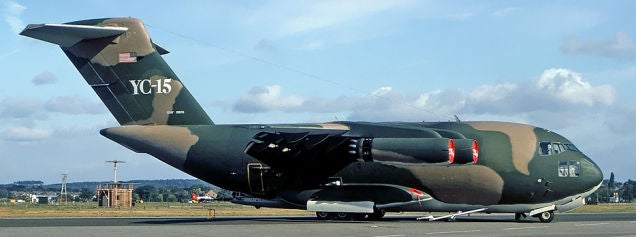
However, the AMST program was canceled before a winner was chosen, and it wasn’t until 1980, when the Air Force was facing the reality of a fleet of aging C-141s, that they revisited the concept, now designated the C-X program. In response to these new requirements, McDonnell Douglas updated their earlier YC-15 design, Boeing brought an updated version of the YC-14, and Lockheed doubled down with one aircraft based on the C-5 as well as an enlarged version of the C-141. Ultimately, the Air Force chose McDonnell Douglas, and gave their aircraft the designation C-17 Globemaster III, a name which pays homage to two earlier airlifters that both carried the nickname, the Douglas C-74 and C-124 . The McDonnell Douglas YC-15, which formed the basis of the C-17.Delays in development and a shortage of funds almost led to the cancelation of the project once again, and led to a four-year delay in the project. Finally, in 1985, a development contract was awarded, with delivery slated to begin in 1990 (McDonnell Douglas had merged with Boeing in 1997). The C-17 is powered by four Pratt & Whitney F117 turbofan engines which give it a cruising speed of 515 mph and a range of up to 5,600 miles, depending on the cargo load. It can carry up to 170,900 pounds of cargo, ranging from as many as 134 troops or one M1 Abrams main battle tank. The C-17 can also carry three M1126 Stryker infantry vehicles or six M1117 Guardian armored security vehicles. Thrust reversers that direct the jet exhaust upward give the C-17 a stopping distance of as little as 3,500 feet while reducing the dangers of ingesting foreign object debris into the engines. During testing, the C-17 set 33 world records, including a record for STOL capability in which a C-17 took off in less than 1,400 ft, carried a payload of 44,000 pounds to altitude, and then landed in less than 1,400 ft. In 1998, the C-17 was awarded the Collier Trophy for achievement in aeronautics. The first C-17s entered service in 1993 and, when production ended in 2015, a total of 279 had been built. They remain in service with the US Air Force, the Royal Air Force, the Royal Australian Air Force and the Indian Air Force. (Top photo US Air Force; YC-17 photo by Steve Fitzgerald via Wikimedia Commons )
!!! UNKNOWN CONTENT TYPE !!!
!!! UNKNOWN CONTENT TYPE !!!
!!! UNKNOWN CONTENT TYPE !!!

September 13, 1994 – The first flight of the Airbus Beluga, a modified Airbus A300-600 widebody airliner that was developed to carry oversize cargo, particularly sections of Airbus aircraft destined for final assembly in France, Germany and Spain. Before the Beluga, Airbus used used a fleet of Aero Spacelines Super Guppy Turbine aircraft in that role, but the idea of Airbus aircraft sections being delivered in Boeing airplanes made for poor publicity. The Beluga entered service in 1995 and is capable of carrying 50,000 cubic feet of cargo weighing up to 50 tons. A total of 5 were built, and they remain in service today. (Photo by Laurent Errera via Wikimedia Commons )
!!! UNKNOWN CONTENT TYPE !!!
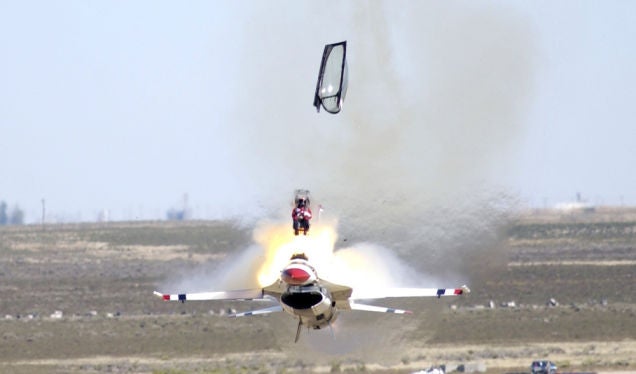
September 14, 2006 – The crash of USAF Thunderbird Number 6 during an air show at Mountain Home Air Force Base.
Immediately after takeoff,
Thunderbirds
opposing solo pilot Captain Chris Stricklin attempted a
Split S
maneuver after incorrectly entering the mean-sea-level of the air base into his altimeter. Coming out of the maneuver too low, Stricklin ejected eight-tenths of a second before impact and suffered only minor injuries. His aircraft was destroyed. Following the crash investigation, procedures for the Split S were changed to add 1,000 ft more altitude before attempting the maneuver. Annotated video of the crash can be found
here
. Video with pilot radio can be found
here
.
(US Air Force photo by Staff Sgt. Bennie J. Davis, III)
!!! UNKNOWN CONTENT TYPE !!!

September 14-18, 1984 – Joe Kittinger makes the first solo transatlantic balloon flight. Kittinger, a retired colonel in the US Air Force, is best known for taking part in Project Manhigh and Project Excelsior where he set a world record in 1960 for a parachute jump from a balloon at 102,800 feet. After his retirement from the Air Force, Kittinger retained his interest in ballooning and made the first solo crossing of the Atlantic Ocean in Rosie O’Grady’s Balloon Of Peace . According to the Fédération Aéronautique Internationale (FAI), the governing body for air sports, the flight set the record for the longest gas balloon distance for its class at 3,544 miles during his flight from Maine to Montenotte, Italy. (Photo via the Joseph W. Kittinger Collection)
!!! UNKNOWN CONTENT TYPE !!!
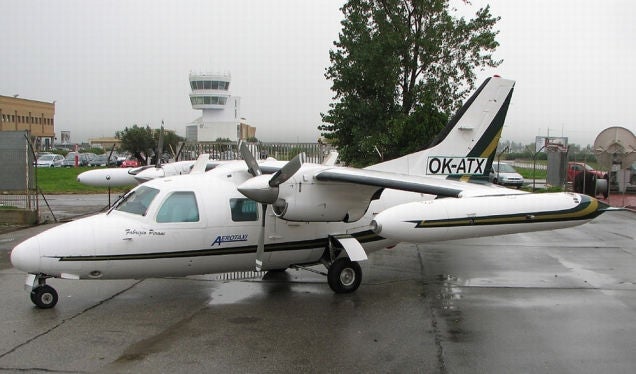
September 14, 1963 – The first flight of the Mitsubishi MU-2,
a twin-turborop utility aircraft for civil and military use and one of the most successful aircraft to be produced in postwar Japan. Following the flights of the prototypes, Mitsubishi partnered with
Mooney Aircraft
in the United States to assemble the aircraft in their San Angelo, Texas factory, with major components shipped from Japan. The Japanese Self-Defense Forces became the only military operator of the MU-2, though they are also flown under government contract by the US Air Force to provide students with battle management training. A total of 704 were produced from 1963-1986.
(Photo by Josef Tóth via
Wikimedia Commons
)
!!! UNKNOWN CONTENT TYPE !!!
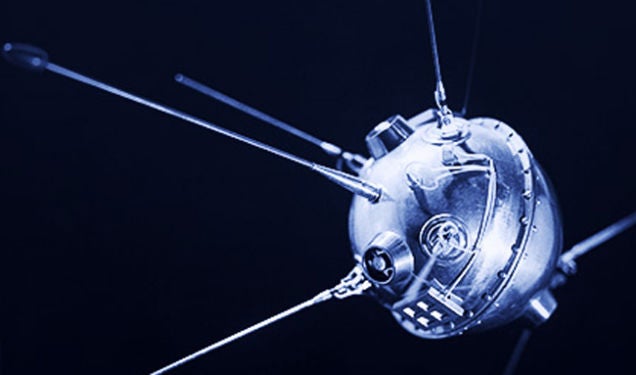
September 14, 1959 – The Soviet probe Luna 2 crashes onto the Moon. Between 1959 and 1976, the Soviet Union carried out the Luna program which attempted to send a series of 24 robotic spacecraft to the moon during the Space Race with the United States. Luna 1 , launched in January 1959, missed the Moon but, in the process, became the first spacecraft to orbit the sun. Luna 2, launched on September 12, 1959, did make it to the Moon, becoming the first man-made object reach the Moon and the first to land on another celestial body. Luna 2 carried instruments to measure the electron spectrum of the outer Van Allen Radiation Belt of the Earth and also searched for radiation belts around the Moon. (Photo via RIA Novosti Archive)
!!! UNKNOWN CONTENT TYPE !!!

September 14, 1917 – The first flight of the Fairey III,
a reconnaissance biplane built during WWI to meet a specification for a carrier-based seaplane. The Fairey III, also known as the F.128, was powered by a series of engines culminating in the
Napier Lion
12-cylinder engine and had wings that could fold for carrier storage. Though seeing only limited service in WWI, development of the aircraft continued between the wars and included a version with floats for operation from the surface of the water. Ultimately a very successful design, a total of 964 were built, and some were still in use in the early years of WWII.
(Fleet Air Arm Archive photo)
!!! UNKNOWN CONTENT TYPE !!!

September 15, 2017 – The Cassini orbiter is intentionally crashed on Saturn. Launched on October 15, 1997 as a combined effort between NASA , the European Space Agency , and the Italian Space Agency , Cassini-Huygens was a two-part robotic spacecraft consisting of the Cassini orbiter and the Huygens lander. Cassini-Huygens passed by Venus and Jupiter before beginning its orbit of Saturn on July 1, 2004, and the Huygens lander descended to the moon Titan on January 14, 2005 marking the first landing on a body in the outer Solar System and the first landing on a moon other than Earth’s moon. Huygens transmitted photos and other data via Cassini back to Earth. Cassini continued to orbit Saturn, and the so-called Grand Finale of the mission saw Cassini fly between the planet and its rings 25 times and return photographs of the planet’s atmosphere. In order to avoid potential contamination of Saturn’s moons, which could have conditions suitable for life, Cassini was intentionally deorbited to the planet’s atmosphere where it will burn up and destroy the spacecraft’s plutonium fuel. (NASA illustration)
!!! UNKNOWN CONTENT TYPE !!!

September 15, 1978 – The death of Willy Messerschmitt.
Messerschmitt began his design career building sail planes during WWI, then moved on to build small sport planes and small passenger planes. In 1936, he won the competition to provide the Luftwaffe with a new frontline fighter, the
Bf 109
, one of the war’s iconic fighters and an aircraft that was produced in greater numbers than any other aircraft in history. After the war, with restrictions placed on the manufacture of military equipment, Messerschmitt turned to the manufacture of sewing machines, prefab buildings, and the
Messerschmitt Kabinenroller
automobile. He also exported his aircraft design talents to other countries, designing the
Hispano HA-200
jet trainer for Spain in 1952 before he was allowed to return to aircraft manufacturing, producing the
Fiat G91
and the
Lockheed F-104 Starfighter
under license for the West German Luftwaffe. His final design was the
Helwan HA-300
, supersonic interceptor for the Egyptian air force.
(Messerschmitt photo via Deutsches Bundesarchiv; Kabinenroller photo by G. Petermann via
Wikimedia Commons
; Bf 109 photo author unknown)
!!! UNKNOWN CONTENT TYPE !!!
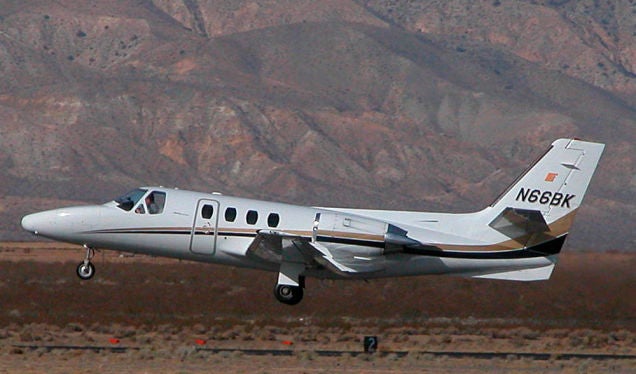
September 15, 1969 – The first flight of the Cessna Citation I, a business jet developed by the Wichita-based Cessna Aircraft Company and the first in a line of business jets . Development began in 1968 when Cessna chose to market a smaller bizjet that would compete with current turboprop aircraft instead of the established bizjet market. Unlike the competing Learjet 25 , which was powered by turbojets, the Citation I was powered by Pratt & Whitney Canada JT15D turbofans and, though it was slower, the addition of thrust reversers made it compatible with shorter airfields. The Citation I was produced from 1969-1985, and a total of 689 were built. (Photo by Alan Radecki via Wikimedia Commons )
!!! UNKNOWN CONTENT TYPE !!!
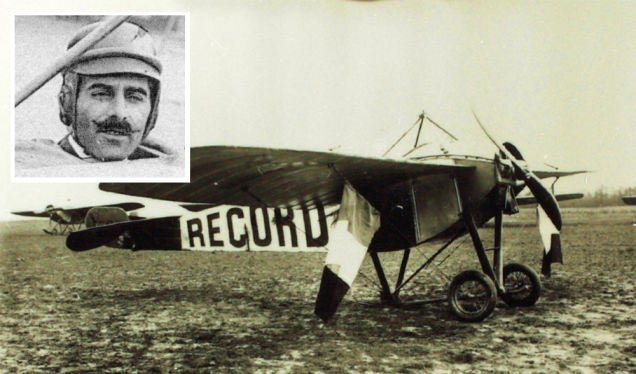
September 15, 1911 – The death of Édouard Nieuport,
a French aviation pioneer and founder, along with his brother Charles, of the
Société Anonyme Des Éstablissements Nieuport
, better known simply as
Nieuport
. Édouard was known for his monoplane designs in an era when most manufacturers were producing biplanes, and he set speed records flying his own aircraft powered by engines of his own design. Though Édouard was killed in a flying accident in 1911, followed two years later by the death of his brother Charles, also in a flying accident, their company went on to become one of the major manufacturers of fighter aircraft in WWI.
(Édouard Nieuport photo author unknown; Nieuport II.G photo by Nieuport)
!!! UNKNOWN CONTENT TYPE !!!
!!! UNKNOWN CONTENT TYPE !!!
!!! UNKNOWN CONTENT TYPE !!!
!!! UNKNOWN CONTENT TYPE !!!
!!! UNKNOWN CONTENT TYPE !!!
!!! UNKNOWN CONTENT TYPE !!!
!!! UNKNOWN CONTENT TYPE !!!
If you enjoy these Aviation History posts, please let me know in the comments. And if you missed any of the past articles, you can find them all at Planelopnik History . You can also find more stories about aviation and aviators at Wingspan and Planes You’ve (Probably) Never Heard Of .
!!! UNKNOWN CONTENT TYPE !!!
 "For Sweden" (rallybeetle)
"For Sweden" (rallybeetle)
09/15/2017 at 12:38, STARS: 3
Ah, the MU-2: a great airplane that gave every pilot with a fresh multi-engine rating access to a twin turboprop.
 "phenotyp" (phenotyp)
"phenotyp" (phenotyp)
09/15/2017 at 12:48, STARS: 1
Whoa, I didn’t know that about Joe Kittenger’s transatlantic trip. Cool!
 "WilliamsSW" (williamssw)
"WilliamsSW" (williamssw)
09/15/2017 at 12:53, STARS: 0
You say that like it’s a bad thing. :P
 "WilliamsSW" (williamssw)
"WilliamsSW" (williamssw)
09/15/2017 at 12:54, STARS: 1
44,000 lb of cargo airborne in 1,400' and stopped in 1,400' is VERY impressive.
As is Joe Kittinger.
 "ttyymmnn" (ttyymmnn)
"ttyymmnn" (ttyymmnn)
09/15/2017 at 12:55, STARS: 1
Kittinger is a total mensch.
 "WilliamsSW" (williamssw)
"WilliamsSW" (williamssw)
09/15/2017 at 12:57, STARS: 1
All of the above, spent 11 months as a POW in Vietnam, and how many guys in their 80's agree to be a consultant on a world record attempt - to break *their own* record?
 "For Sweden" (rallybeetle)
"For Sweden" (rallybeetle)
09/15/2017 at 12:59, STARS: 1
Imagine giving a Hellcat to a brand new driver.
 "WilliamsSW" (williamssw)
"WilliamsSW" (williamssw)
09/15/2017 at 13:01, STARS: 1
My instructor used to say that pilots like that would be so far behind the airplane they won’t get to the crash site until 5 minutes after the plane does.
 "Kiltedpadre" (kiltedpadre)
"Kiltedpadre" (kiltedpadre)
09/15/2017 at 14:43, STARS: 2
And gave every ramp rat hearing damage even if they were already wearing hearing protection; loud SOBs.
 "XJDano" (xjdano)
"XJDano" (xjdano)
09/15/2017 at 20:17, STARS: 0

Not about history, but there was a big plane circling COTA this evening. This was about the best photo I could get with my phone.
 "ttyymmnn" (ttyymmnn)
"ttyymmnn" (ttyymmnn)
09/15/2017 at 20:26, STARS: 0
Looks like a KC-135. The TX ANG has a base at Bergstrom, and it’s been all hands on deck since Harvey.
 "XJDano" (xjdano)
"XJDano" (xjdano)
09/15/2017 at 22:44, STARS: 0
It had circled around the city at least 5-6 times I was in the grandstands.
Interesting.
 "ttyymmnn" (ttyymmnn)
"ttyymmnn" (ttyymmnn)
10/19/2017 at 12:06, STARS: 0
I came back to this post because, for some reason, it showed up on the Oppo sidebar. I was down at the Austin airport a week or so ago, and I saw a KC-135 parked down in the GA area. So this is definitely a KC-135. There only a handful of 4-engine jets flying today that you might see in the US: KC-135, Boeing 747, Airbus A380, Airbus A340. Cargo planes like the An-124, C-17, C-5 or C-141 would be instantly recognizable as such, as would the A380 or 747. I think that the ANG positioned this plane here to assist with hurricane Harvey relief efforts.